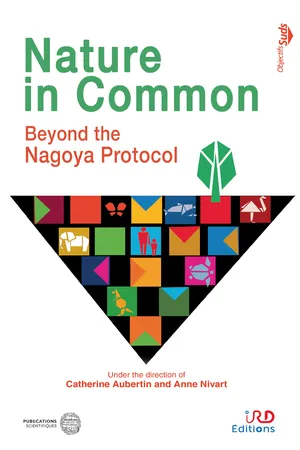
- English
- ePUB (mobile friendly)
- Available on iOS & Android
About this book
A landmark text in global biodiversity governance, the Nagoya Protocol was intended to put an end to the uncompensated exploitation of natural resources and knowledge originating in the Global South. Its stated objectives were to establish greater justice and equity between providers and users of genetic resources, to foreground the contributions and knowledge of indigenous peoples and local communities, and to decolonise research, all while promoting the conservation of biodiversity. Thirty years on from the Convention on Biological Diversity from which it originated, the authors examine the legal and practical outcomes of this virtuous framework, which came into force in 2014. Although it has certainly fostered greater recognition of the plurality of knowledge and advanced the traceability of resources, the Protocol has also helped to impose a narrowly market-oriented understanding of nature and knowledge, exacerbating demands for recognition and ownership in the Global South, and effectively restricting access to biodiversity in an era of globalised research. This book presents an interdisciplinary dialogue informed by the experiences of researchers and conservation stakeholders (local communities, managers of collections and natural parks). Looking beyond the Nagoya Protocol, it invites us to question the relationships between societies and nature in light of the ecological emergency. It is intended for anyone with an interest in the economics of biodiversity and environmental justice.
Frequently asked questions
- Essential is ideal for learners and professionals who enjoy exploring a wide range of subjects. Access the Essential Library with 800,000+ trusted titles and best-sellers across business, personal growth, and the humanities. Includes unlimited reading time and Standard Read Aloud voice.
- Complete: Perfect for advanced learners and researchers needing full, unrestricted access. Unlock 1.4M+ books across hundreds of subjects, including academic and specialized titles. The Complete Plan also includes advanced features like Premium Read Aloud and Research Assistant.
Please note we cannot support devices running on iOS 13 and Android 7 or earlier. Learn more about using the app.
Information
Table of contents
- Cover
- Bibliographic informations
- First pages
- Table of contents
- Thanks
- Preface
- General Introduction
- Part 1: Biological Resources: Circulation and Collection
- Part 2: The Machinery of the Nagoya Protocol
- Part 3: Rethinking indigenous rights
- Part 4: Spillover and Tensions
- Conclusion
- List of acronyms
- List of Boxes
- About the Authors